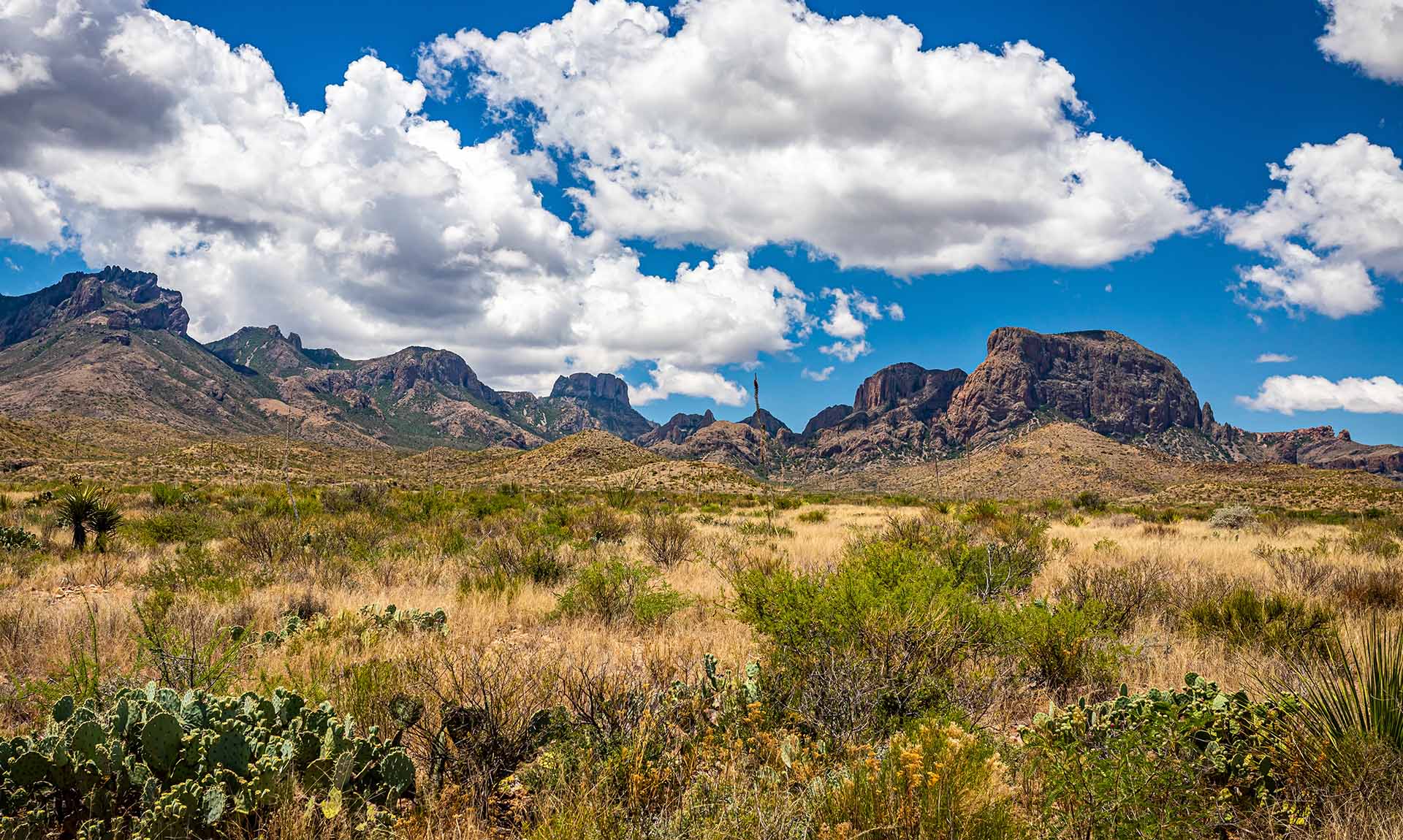
From Republic to Statehood: The Unfolding Saga of the Republic of Texas
The Republic of Texas, an independent nation that existed from 1836 to 1845, is a unique and captivating chapter in the broader tapestry of American history. Often overlooked in conventional United States history narratives, this period was of profound significance not only for the state of Texas but also for the wider geopolitical landscape.
From its birth amidst a revolution against Mexican rule, through its struggles as an independent nation, to its annexation as the 28th state of the United States, the Republic of Texas epitomizes a quintessential tale of determination, resilience, and the quest for self-governance. Its history is replete with heroic battles, political intrigue, economic struggles and triumphs, and the inexorable push and pull of cultural and societal transformations.
The leaders of the Republic, their policies, and the realities of life in this frontier nation have left a legacy that continues to shape Texas to this day. They have influenced its political ethos, economic structure, and cultural identity, making the story of the Republic of Texas a vital piece of understanding the Texas we know today.
In this comprehensive exploration, we delve into the birth, life, and legacy of the Republic of Texas. From the pivotal Texas Revolution to the notable presidencies that guided the Republic, the economic and social landscape of the time, the distinctive constitution it adopted, and the lasting influences on modern Texas, this journey promises a deep understanding of a critical, yet often underexplored, period of American history.
Birth of the Republic of Texas
The birth of the Republic of Texas was a tumultuous and profound period in the history of North America, marked by a struggle for independence, fierce battles, and the creation of a new nation.
This story begins in the early 19th century, when Texas was part of Mexico. As Mexico had recently won its independence from Spain, it encouraged legal immigration to promote economic growth and secure its territories. Thousands of American settlers moved into Texas, often bringing enslaved people with them to support cotton farming, a practice at odds with Mexican law.
Over time, cultural and political tensions escalated between the Mexican government, led by General Antonio López de Santa Anna, and the American settlers, commonly referred to as “Texians.” Santa Anna’s shift towards centralist policies, infringing on states’ rights, caused unrest among the settlers.
In 1835, these tensions erupted into the Texas Revolution. Key battles of this conflict, which lasted until April 21, 1836, include:
- The Siege of the Alamo (February 23 – March 6, 1836): A pivotal event in the Revolution, where a small Texian force bravely defended the Alamo Mission near San Antonio de Béxar against Santa Anna’s troops. Despite the Texian defeat, the event inspired greater resistance among the Texians.
- The Battle of San Jacinto (April 21, 1836): Led by General Sam Houston, the Texian Army achieved a decisive victory over the Mexican Army in just 18 minutes. Santa Anna was captured the following day, marking a significant turning point in the Texas Revolution.
In the midst of the Revolution, the Texians formed a provisional government. On March 2, 1836, the Texas Declaration of Independence was adopted at Washington-on-the-Brazos, declaring Texas a sovereign and independent republic. This document, echoing the U.S. Declaration of Independence, voiced grievances against the Mexican government and affirmed the natural rights of its people.
The Republic of Texas was born out of a desire for self-governance and individual liberties, a testament to the tenacity and resilience of its people. This dynamic and transformative period laid the foundation for Texas as we know it today.
Presidents of the Republic of Texas
The Republic of Texas was led by four notable figures who had a profound influence on the formation of its national identity:
- David G. Burnet (1836): David Burnet served as the ad-interim president for a brief period during the Texas Revolution before the election of the first official president. He faced the arduous task of leading the young Republic during the uncertain period of the revolution, even as government officials were fleeing the temporary capital, Washington-on-the-Brazos, ahead of the advancing Mexican Army. Mirabeau B. Lamar served as his Vice President.
- Sam Houston (1836–1838, 1841–1844): Known as the ‘Hero of San Jacinto,’ Sam Houston was the first and third President of the Republic of Texas. Under his leadership, the government moved to a more secure location, later known as the city of Houston. His terms were marked by efforts to maintain peace with Native American tribes and to stabilize the Republic’s fragile economy. Houston tirelessly pushed for Texas’s annexation to the United States, foreseeing the economic and defense benefits it would bring. His first Vice President was Mirabeau B. Lamar, while Edward Burleson served during his second term.
- Mirabeau B. Lamar (1838–1841): Mirabeau B. Lamar, who served as Houston’s Vice President during his first term, became the second President. His presidency, although ambitious in its vision, faced significant challenges. Lamar is often called the ‘Father of Texas Education’ for setting aside land for public schools and a state university. However, his fiscal policies, including the expulsion of Native American tribes and the establishment of a national bank, led to financial hardships. His Vice President was David G. Burnet.
- Anson Jones (1844–1846): Anson Jones, the final President of the Republic, oversaw the transition of Texas into statehood. During his presidency, he worked to strengthen the Republic’s economy and manage its debt, paving the way for a smoother annexation process. Jones, a former doctor, has left a legacy in the field of public health in Texas. Kenneth L. Anderson was his Vice President.
Each of these presidents faced unique challenges and left indelible marks on Texas’s history. From the formative stages of the Texas Revolution to the final moments leading up to statehood, their leadership significantly shaped the trajectory of the Republic and its eventual integration into the United States.
Economic and Social Landscape of the Republic
The Republic of Texas, with its wide-open spaces and fertile lands, was a place of both opportunities and challenges. Its economy and society were a microcosm of the broader frontier experience, characterized by rapid growth and recurrent difficulties.
Economy
The Republic’s economy was primarily agrarian, with cotton and cattle as the two mainstays. The cotton was grown in the fertile eastern part of the state, while cattle ranching took place in the grasslands of south and central Texas.
Despite the richness of these resources, the economy of the Republic faced significant hurdles. First and foremost was the issue of currency. The Republic issued its currency, the Texas dollar, but it quickly depreciated due to lack of backing in gold and silver, leading to severe inflation and economic instability. This economic crisis was compounded by the Republic’s considerable public debt, accumulated during the Texas Revolution.
Trade was also a crucial part of the Republic’s economy. Texas traded extensively with the United States, but its status as an independent nation with international debts and a fluctuating currency complicated these relationships.
Society
In societal terms, the Republic was a place of swift change. Its population grew rapidly as settlers, many from the United States, flocked to Texas drawn by the promise of cheap land and economic opportunity. This influx of settlers transformed Texas’s demographics, and by the end of the Republic era, Anglos (white settlers of non-Hispanic origin) significantly outnumbered the Hispanic Tejano population.
However, the rapid influx of settlers also led to conflict, especially with Native American tribes such as the Comanche and the Kiowa. Battles and raids were common occurrences on the frontier, leading to an often-violent period of adjustment and negotiation.
Despite these challenges, society in the Republic was dynamic and often vibrant. Towns sprung up, newspapers were established, and cultural institutions, such as schools and churches, began to take root. The Republic was a place of hardship, but it was also a place of immense possibility and potential.
In essence, the Republic’s economic and social landscape was marked by a spirit of rugged individualism and resilience. The trials faced and the triumphs achieved during this period indelibly shaped the character of Texas and continue to influence its identity even today.
The Constitution of the Republic of Texas
One of the earliest tasks for the newly independent Republic of Texas was establishing a legal framework for governance. On March 17, 1836, the Constitution of the Republic of Texas was adopted, drawing much of its influence from the United States Constitution and incorporating elements from the southern states’ legal traditions. The Texas Constitution, like its U.S. counterpart, established three branches of government:
- Executive Branch: Headed by the President, this branch was responsible for implementing and enforcing laws. The President served for a term of three years and could not serve consecutive terms.
- Legislative Branch: This branch consisted of a bicameral Congress, with a House of Representatives and a Senate, mirroring the U.S. system. The Congress was responsible for making laws.
- Judicial Branch: Comprising a Supreme Court and district courts, this branch was charged with interpreting the laws.
This constitution had some distinctive provisions as well:
- Slavery: Unlike the U.S. Constitution, the Texas Constitution explicitly protected the institution of slavery, prohibiting any law that impinged on the right of residents to own enslaved people. This reflected the cultural and economic ties many Texan settlers retained with the Southern United States.
- Land Ownership: The constitution also allowed for liberal land policies, which were designed to encourage immigration and settlement.
Over the course of the Republic’s existence, two further constitutions were adopted, in 1838 and 1845. These largely retained the initial constitution’s principles while making specific revisions and clarifications. The 1845 constitution would go on to form the basis for the Texas State Constitution following annexation to the United States.
The Constitution of the Republic of Texas played a crucial role in shaping the nascent nation’s legal and political landscape, and its influence is evident in the Texas state constitution even today.
Annexation and Transition to Statehood
The annexation of the Republic of Texas and its transition to statehood is a pivotal chapter in American history, marked by intricate political maneuvering, economic considerations, and eventual military conflict.
After nearly a decade as an independent nation, the Republic of Texas faced a host of challenges, including significant public debt and ongoing threats from Mexico, which had never formally recognized Texas’s independence. These circumstances led many, including President Sam Houston, to push for annexation to the United States.
However, the path to annexation was far from smooth. The question of Texas annexation sparked heated debates in the U.S. Many Northerners were apprehensive about adding a new slaveholding state, while Southerners generally supported the move. Furthermore, there was widespread concern that annexation could trigger a war with Mexico.
In the face of these complexities, U.S. President John Tyler proposed a joint resolution rather than a treaty for annexation, thereby lowering the required approval threshold from two-thirds to a simple majority in each house of Congress. This joint resolution was passed by the U.S. Congress on March 1, 1845.
With approval from the U.S. in place, the proposal of annexation was then put before the people of Texas. A convention was held in July 1845, where delegates overwhelmingly approved the joint resolution and drafted a new state constitution. This constitution was ratified by a wide margin in a public referendum in October.
On December 29, 1845, Texas officially became the 28th state of the United States, marking the end of the Republic era. However, this transition did not occur without repercussions. The annexation of Texas further strained U.S.-Mexico relations, setting the stage for the Mexican American War, which broke out in 1846.
The annexation of Texas and its transition to statehood were more than just the absorption of a new territory by the United States; it was a turning point that had significant implications for the balance of power within the U.S. and its relationship with neighboring Mexico. Today, this period stands as a testament to Texas’s enduring spirit and its significant role in the broader narrative of American history.
Legacy of the Republic of Texas
The Republic of Texas, despite its relatively short lifespan of just under a decade, left a profound and lasting legacy that continues to shape the state’s identity today. From the impact on political structures and policies to the indelible mark on the state’s culture and ethos, the legacy of the Republic of Texas permeates many aspects of modern Texas.
Political and Legal Impact
The Texas State Constitution, still in effect today with numerous amendments, is fundamentally rooted in the constitutions of the Republic era. The structure of government, principles of individual rights, and concepts of land and property rights bear the imprints of the Republic’s legal traditions.
The Republic’s experience as a sovereign nation also shapes Texas’s distinctive political culture, characterized by a strong commitment to states’ rights and suspicion of federal power. These attitudes continue to influence the political dialogue in Texas and its role within the wider United States.
Economic Influence
The Republic era’s land policies, designed to encourage settlement and economic development, set the stage for the state’s later economic growth. The rights to mineral resources, a stipulation unique to Texas when it was annexed, paved the way for the state’s oil boom in the 20th century and its ongoing prominence in the energy sector.
Cultural Legacy
The Republic of Texas has left a significant cultural legacy, contributing to a unique Texan identity. The history of the Republic, from the heroic stand at the Alamo to the victory at San Jacinto, is a key part of the state’s folklore. The state’s motto, “Remember the Alamo,” serves as a testament to this enduring legacy.
The Lone Star Flag, originally adopted by the Republic in 1839, remains the state flag and is a universally recognized symbol of Texas. The ‘Lone Star State’ nickname is a direct reference to the Republic’s era, representing the state’s history of independence and resilience.
The Republic of Texas was a crucial period in the state’s history, and its legacy continues to reverberate in modern Texas. This enduring influence is a testament to the Republic’s significance and the fortitude of the people who brought it into existence.
The Republic of Texas Items On Amazon
While the Republic of Texas holds a cherished place in the annals of history, finding memorabilia that honors this unique era can prove to be a challenge. Often, enthusiasts have to scour various physical and online shops to stumble upon relevant pieces, and even then, shipping can be a hassle. However, Amazon stands out as a singular platform that not only hosts an impressive variety of Republic of Texas memorabilia but also offers the added benefit of free shipping for its Prime members. Whether you’re searching for historical replicas, clothing adorned with the Lone Star flag, or literature diving into the Republic’s fascinating history, Amazon has made acquiring these treasures far more accessible and convenient for history buffs and Texan enthusiasts alike.
Disclaimer: This blog post includes affiliate links to Amazon. By choosing to purchase through these links, you support this page, and we may receive a commission. Rest assured, this comes at no extra cost to you. Product information is sourced from the internet and deemed reliable. Please verify to ensure it meets your specific needs and meets your expectations.
From Republic to Statehood: The Unfolding Saga of the Republic of Texas
The Republic of Texas, an independent nation that existed from 1836 to 1845, is a unique and captivating chapter in the broader tapestry of American history. Often overlooked in conventional United States history narratives, this period was of profound significance not only for the state of Texas but also for the wider geopolitical landscape.
From its birth amidst a revolution against Mexican rule, through its struggles as an independent nation, to its annexation as the 28th state of the United States, the Republic of Texas epitomizes a quintessential tale of determination, resilience, and the quest for self-governance. Its history is replete with heroic battles, political intrigue, economic struggles and triumphs, and the inexorable push and pull of cultural and societal transformations.
The leaders of the Republic, their policies, and the realities of life in this frontier nation have left a legacy that continues to shape Texas to this day. They have influenced its political ethos, economic structure, and cultural identity, making the story of the Republic of Texas a vital piece of understanding the Texas we know today.
In this comprehensive exploration, we delve into the birth, life, and legacy of the Republic of Texas. From the pivotal Texas Revolution to the notable presidencies that guided the Republic, the economic and social landscape of the time, the distinctive constitution it adopted, and the lasting influences on modern Texas, this journey promises a deep understanding of a critical, yet often underexplored, period of American history.
Birth of the Republic of Texas
The birth of the Republic of Texas was a tumultuous and profound period in the history of North America, marked by a struggle for independence, fierce battles, and the creation of a new nation.
This story begins in the early 19th century, when Texas was part of Mexico. As Mexico had recently won its independence from Spain, it encouraged legal immigration to promote economic growth and secure its territories. Thousands of American settlers moved into Texas, often bringing enslaved people with them to support cotton farming, a practice at odds with Mexican law.
Over time, cultural and political tensions escalated between the Mexican government, led by General Antonio López de Santa Anna, and the American settlers, commonly referred to as “Texians.” Santa Anna’s shift towards centralist policies, infringing on states’ rights, caused unrest among the settlers.
In 1835, these tensions erupted into the Texas Revolution. Key battles of this conflict, which lasted until April 21, 1836, include:
- The Siege of the Alamo (February 23 – March 6, 1836): A pivotal event in the Revolution, where a small Texian force bravely defended the Alamo Mission near San Antonio de Béxar against Santa Anna’s troops. Despite the Texian defeat, the event inspired greater resistance among the Texians.
- The Battle of San Jacinto (April 21, 1836): Led by General Sam Houston, the Texian Army achieved a decisive victory over the Mexican Army in just 18 minutes. Santa Anna was captured the following day, marking a significant turning point in the Texas Revolution.
In the midst of the Revolution, the Texians formed a provisional government. On March 2, 1836, the Texas Declaration of Independence was adopted at Washington-on-the-Brazos, declaring Texas a sovereign and independent republic. This document, echoing the U.S. Declaration of Independence, voiced grievances against the Mexican government and affirmed the natural rights of its people.
The Republic of Texas was born out of a desire for self-governance and individual liberties, a testament to the tenacity and resilience of its people. This dynamic and transformative period laid the foundation for Texas as we know it today.
Presidents of the Republic of Texas
The Republic of Texas was led by four notable figures who had a profound influence on the formation of its national identity:
- David G. Burnet (1836): David Burnet served as the ad-interim president for a brief period during the Texas Revolution before the election of the first official president. He faced the arduous task of leading the young Republic during the uncertain period of the revolution, even as government officials were fleeing the temporary capital, Washington-on-the-Brazos, ahead of the advancing Mexican Army. Mirabeau B. Lamar served as his Vice President.
- Sam Houston (1836–1838, 1841–1844): Known as the ‘Hero of San Jacinto,’ Sam Houston was the first and third President of the Republic of Texas. Under his leadership, the government moved to a more secure location, later known as the city of Houston. His terms were marked by efforts to maintain peace with Native American tribes and to stabilize the Republic’s fragile economy. Houston tirelessly pushed for Texas’s annexation to the United States, foreseeing the economic and defense benefits it would bring. His first Vice President was Mirabeau B. Lamar, while Edward Burleson served during his second term.
- Mirabeau B. Lamar (1838–1841): Mirabeau B. Lamar, who served as Houston’s Vice President during his first term, became the second President. His presidency, although ambitious in its vision, faced significant challenges. Lamar is often called the ‘Father of Texas Education’ for setting aside land for public schools and a state university. However, his fiscal policies, including the expulsion of Native American tribes and the establishment of a national bank, led to financial hardships. His Vice President was David G. Burnet.
- Anson Jones (1844–1846): Anson Jones, the final President of the Republic, oversaw the transition of Texas into statehood. During his presidency, he worked to strengthen the Republic’s economy and manage its debt, paving the way for a smoother annexation process. Jones, a former doctor, has left a legacy in the field of public health in Texas. Kenneth L. Anderson was his Vice President.
Each of these presidents faced unique challenges and left indelible marks on Texas’s history. From the formative stages of the Texas Revolution to the final moments leading up to statehood, their leadership significantly shaped the trajectory of the Republic and its eventual integration into the United States.
Economic and Social Landscape of the Republic
The Republic of Texas, with its wide-open spaces and fertile lands, was a place of both opportunities and challenges. Its economy and society were a microcosm of the broader frontier experience, characterized by rapid growth and recurrent difficulties.
Economy
The Republic’s economy was primarily agrarian, with cotton and cattle as the two mainstays. The cotton was grown in the fertile eastern part of the state, while cattle ranching took place in the grasslands of south and central Texas.
Despite the richness of these resources, the economy of the Republic faced significant hurdles. First and foremost was the issue of currency. The Republic issued its currency, the Texas dollar, but it quickly depreciated due to lack of backing in gold and silver, leading to severe inflation and economic instability. This economic crisis was compounded by the Republic’s considerable public debt, accumulated during the Texas Revolution.
Trade was also a crucial part of the Republic’s economy. Texas traded extensively with the United States, but its status as an independent nation with international debts and a fluctuating currency complicated these relationships.
Society
In societal terms, the Republic was a place of swift change. Its population grew rapidly as settlers, many from the United States, flocked to Texas drawn by the promise of cheap land and economic opportunity. This influx of settlers transformed Texas’s demographics, and by the end of the Republic era, Anglos (white settlers of non-Hispanic origin) significantly outnumbered the Hispanic Tejano population.
However, the rapid influx of settlers also led to conflict, especially with Native American tribes such as the Comanche and the Kiowa. Battles and raids were common occurrences on the frontier, leading to an often-violent period of adjustment and negotiation.
Despite these challenges, society in the Republic was dynamic and often vibrant. Towns sprung up, newspapers were established, and cultural institutions, such as schools and churches, began to take root. The Republic was a place of hardship, but it was also a place of immense possibility and potential.
In essence, the Republic’s economic and social landscape was marked by a spirit of rugged individualism and resilience. The trials faced and the triumphs achieved during this period indelibly shaped the character of Texas and continue to influence its identity even today.
The Constitution of the Republic of Texas
One of the earliest tasks for the newly independent Republic of Texas was establishing a legal framework for governance. On March 17, 1836, the Constitution of the Republic of Texas was adopted, drawing much of its influence from the United States Constitution and incorporating elements from the southern states’ legal traditions. The Texas Constitution, like its U.S. counterpart, established three branches of government:
- Executive Branch: Headed by the President, this branch was responsible for implementing and enforcing laws. The President served for a term of three years and could not serve consecutive terms.
- Legislative Branch: This branch consisted of a bicameral Congress, with a House of Representatives and a Senate, mirroring the U.S. system. The Congress was responsible for making laws.
- Judicial Branch: Comprising a Supreme Court and district courts, this branch was charged with interpreting the laws.
This constitution had some distinctive provisions as well:
- Slavery: Unlike the U.S. Constitution, the Texas Constitution explicitly protected the institution of slavery, prohibiting any law that impinged on the right of residents to own enslaved people. This reflected the cultural and economic ties many Texan settlers retained with the Southern United States.
- Land Ownership: The constitution also allowed for liberal land policies, which were designed to encourage immigration and settlement.
Over the course of the Republic’s existence, two further constitutions were adopted, in 1838 and 1845. These largely retained the initial constitution’s principles while making specific revisions and clarifications. The 1845 constitution would go on to form the basis for the Texas State Constitution following annexation to the United States.
The Constitution of the Republic of Texas played a crucial role in shaping the nascent nation’s legal and political landscape, and its influence is evident in the Texas state constitution even today.
Annexation and Transition to Statehood
The annexation of the Republic of Texas and its transition to statehood is a pivotal chapter in American history, marked by intricate political maneuvering, economic considerations, and eventual military conflict.
After nearly a decade as an independent nation, the Republic of Texas faced a host of challenges, including significant public debt and ongoing threats from Mexico, which had never formally recognized Texas’s independence. These circumstances led many, including President Sam Houston, to push for annexation to the United States.
However, the path to annexation was far from smooth. The question of Texas annexation sparked heated debates in the U.S. Many Northerners were apprehensive about adding a new slaveholding state, while Southerners generally supported the move. Furthermore, there was widespread concern that annexation could trigger a war with Mexico.
In the face of these complexities, U.S. President John Tyler proposed a joint resolution rather than a treaty for annexation, thereby lowering the required approval threshold from two-thirds to a simple majority in each house of Congress. This joint resolution was passed by the U.S. Congress on March 1, 1845.
With approval from the U.S. in place, the proposal of annexation was then put before the people of Texas. A convention was held in July 1845, where delegates overwhelmingly approved the joint resolution and drafted a new state constitution. This constitution was ratified by a wide margin in a public referendum in October.
On December 29, 1845, Texas officially became the 28th state of the United States, marking the end of the Republic era. However, this transition did not occur without repercussions. The annexation of Texas further strained U.S.-Mexico relations, setting the stage for the Mexican American War, which broke out in 1846.
The annexation of Texas and its transition to statehood were more than just the absorption of a new territory by the United States; it was a turning point that had significant implications for the balance of power within the U.S. and its relationship with neighboring Mexico. Today, this period stands as a testament to Texas’s enduring spirit and its significant role in the broader narrative of American history.
Legacy of the Republic of Texas
The Republic of Texas, despite its relatively short lifespan of just under a decade, left a profound and lasting legacy that continues to shape the state’s identity today. From the impact on political structures and policies to the indelible mark on the state’s culture and ethos, the legacy of the Republic of Texas permeates many aspects of modern Texas.
Political and Legal Impact
The Texas State Constitution, still in effect today with numerous amendments, is fundamentally rooted in the constitutions of the Republic era. The structure of government, principles of individual rights, and concepts of land and property rights bear the imprints of the Republic’s legal traditions.
The Republic’s experience as a sovereign nation also shapes Texas’s distinctive political culture, characterized by a strong commitment to states’ rights and suspicion of federal power. These attitudes continue to influence the political dialogue in Texas and its role within the wider United States.
Economic Influence
The Republic era’s land policies, designed to encourage settlement and economic development, set the stage for the state’s later economic growth. The rights to mineral resources, a stipulation unique to Texas when it was annexed, paved the way for the state’s oil boom in the 20th century and its ongoing prominence in the energy sector.
Cultural Legacy
The Republic of Texas has left a significant cultural legacy, contributing to a unique Texan identity. The history of the Republic, from the heroic stand at the Alamo to the victory at San Jacinto, is a key part of the state’s folklore. The state’s motto, “Remember the Alamo,” serves as a testament to this enduring legacy.
The Lone Star Flag, originally adopted by the Republic in 1839, remains the state flag and is a universally recognized symbol of Texas. The ‘Lone Star State’ nickname is a direct reference to the Republic’s era, representing the state’s history of independence and resilience.
The Republic of Texas was a crucial period in the state’s history, and its legacy continues to reverberate in modern Texas. This enduring influence is a testament to the Republic’s significance and the fortitude of the people who brought it into existence.
The Republic of Texas Items On Amazon
While the Republic of Texas holds a cherished place in the annals of history, finding memorabilia that honors this unique era can prove to be a challenge. Often, enthusiasts have to scour various physical and online shops to stumble upon relevant pieces, and even then, shipping can be a hassle. However, Amazon stands out as a singular platform that not only hosts an impressive variety of Republic of Texas memorabilia but also offers the added benefit of free shipping for its Prime members. Whether you’re searching for historical replicas, clothing adorned with the Lone Star flag, or literature diving into the Republic’s fascinating history, Amazon has made acquiring these treasures far more accessible and convenient for history buffs and Texan enthusiasts alike.
Disclaimer: This blog post includes affiliate links to Amazon. By choosing to purchase through these links, you support this page, and we may receive a commission. Rest assured, this comes at no extra cost to you. Product information is sourced from the internet and deemed reliable. Please verify to ensure it meets your specific needs and meets your expectations.












